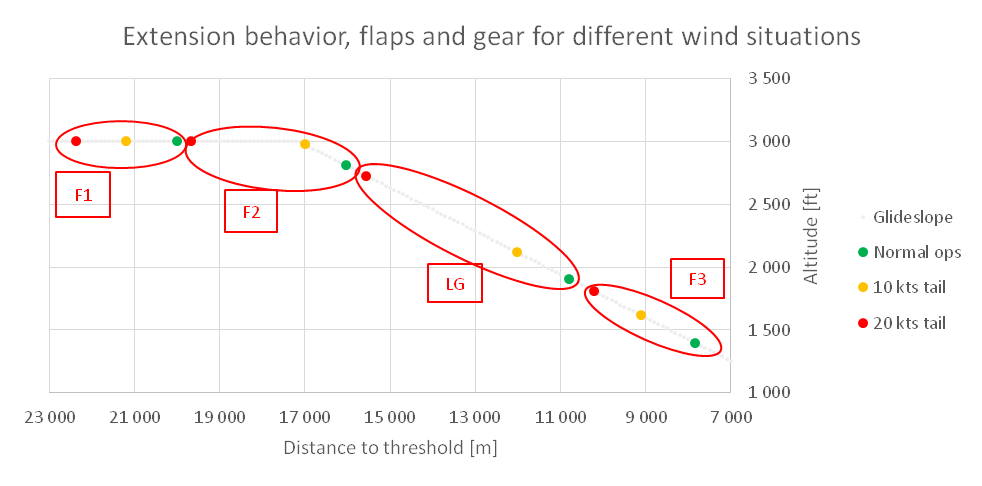BRANTARE
BRANTARE A project with the objective to study how pilots’ handling of the aircraft on approach and landing under different wind conditions, simulating varying approach angles, may affect noise emission to the ground. The results of Brantare have been published in Noise Control Engineering Journal; "Approximation of pilot operational behavior affecting noise footprint in steep approaches"; B. Moberg et al.
The project
A steeper approach path is one potential way to reduce the perceived aircraft noise level on the ground around airports. However, pilots changing operational behaviour on a steeper glide slope may have an impact, or even a counterbalancing effect on the desired noise reduction outcome. The overall aim of this research was to identify possible pilot impact on the noise abatement potential in steeper approaches. Project BRANTARE was based on the assumption that an approach conducted in tailwind conditions to a large extent ”equals” a steeper approach angle under zero wind conditions. In the project, actual recorded flight data recorder data collected during standard 3.0-degree glide slope angle approaches was used to calculate an equivalent zero wind glide slope angle (EZWGS). Correlations between the calculated glide slope angles and pilot operational behaviour was analysed.

In the first phase of the research, the logic behind the development of an equivalent zero wind calculation method was developed and presented. A user-centred approach was applied which included a pilot workshop, and interviews with airline pilots. Based on the results, it was decided to use the average wind from glide slope intercept to landing gear extension for the calculation of the EZWGS. As a result of the workshop, where the participating pilots were asked to describe how they would configure the aircraft for landing, it was concluded that it can be expected that the pilots’ behaviour will change under varying wind conditions (see figure 2 below).

In the second phase of the research, actual flight data recorder data was used to verify the pilots’ stated behaviour during the workshop and the interviews. Operational flight data from 1 370 separate flights was extracted and analysed. After cleaning of data 1 159 flights could be used for analysis. The results of the analysis indicates that the pilots’ operational behaviour will change when glide slope angle increases. It will however not change in the same way as the pilots answered in the workshop and interviews, Fig 3

The final conclusion of the project was that for the aircraft type investigated, the Airbus A321, the extension of final flap and landing gear will in steeper approaches take place at a greater height but closer to the airport than for standard 3.0° ILS-approaches. The result can be a reduction of the noise from arriving aircraft by up to 2 dB in some areas beneath the approach path if a 3.5° glide slope angle is used.
Project members



